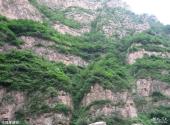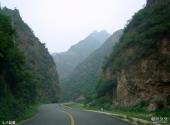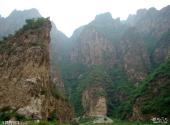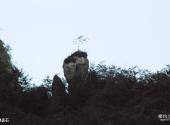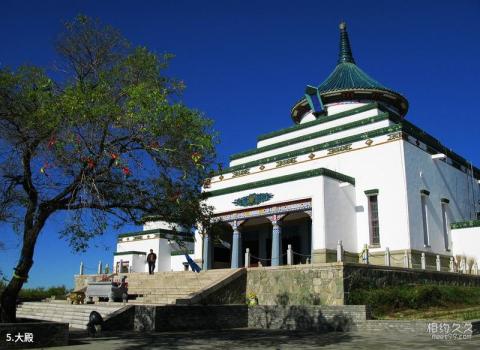
Scenic spot introduction:
Feihu Valley is one of the eight well-known Taihang Mountains in ancient and modern times. Historically, it served as an important transportation route "to the North China Plain in the south and to the desert outside the Great Wall in the north." It has been a battleground for military strategists and a famous ancient battlefield since ancient times. Feihu Valley is located in Songjiazhuang Town, 13 kilometers south of Yu County, Zhangjiakou City, Hebei Province, at the junction of the Taihang Mountains and the Yanshan Mountains. The grand canyon runs north-south and stretches for more than 20 kilometers. The widest point is 70 meters to 100 meters, and the narrowest point is only 4 meters, with two steep walls, a slight opening, nine curves of ants, winding ileum, steep peaks, strange hanging cliffs, and changeable thick clouds. The scenery is known for its strange peaks and secluded and dangerous valleys.Attractions distribution:
The mountains in Feihu Valley are as high as 2,000 meters, with an average altitude between 1,500 and 2,500 meters. The mountains are lush with vegetation, flowers, rare animals, butterflies and birds singing. The pine waves in the valley are blown by the cool breeze, and the different peaks are different. It is so miraculous that local people describe it as "a flying fox with seventy-two bends for forty miles, with holes in the sky and beautiful scenery everywhere." In ancient times, Feihu Valley was also called Beikou Valley. In history, countless armies passed through the valley, and the neighing of war horses is still in my ears: During the Warring States Period, King Wuling of Zhao rode in Hufu and shot, and Feihu established Daijun to infinity; Liu Bang once defeated Xiang Yu here; During the reign of Emperor Wu of the Han Dynasty, generals Wei Qing, Huo Qubing, and flying general Li Guang sent their horsemen and troops out of the fortress to drive away the Huns; during the Three Kingdoms period, Cai Wenji returned to the Han Dynasty singing eighteen beats of Hujia, and Cao Cao's son Cao Zhang fought against Wuhuan here; during the Ming Dynasty, Cao Zhang fought against Wuhuan. One of the three North Korean defense battles of Beijing was caused by the fall of Feihukou; the "Battle of Mingpu" in which the Eighth Route Army ambushed the Japanese army in Feihu Valley during the Anti-Japanese War successfully hit the Japanese invaders' arrogance, so that during the eight years of the Anti-Japanese War, the Japanese army did not dare to enter again. Feihu Valley. Along the way along the canyon, there are "One Stick of Incense", "Double Arrow Holes", "Three Immortals Sitting on the World", "Four Generals Guarding the Gate", "Five Dogs Looking at the Moon", "Liulang Zhuang", "Qinv Peak", "Eight Girls Peak" "Fairy Cave" and other strange peaks and rocks, every wonder will leave people with infinite reverie.Scenic spot qualifications:
National 3A scenic spotScenic spot features:
Self-driving tour, mountains, canyons, strange peaks and rocksAttraction Address
Travel Guide
Best time to visit:
Summer and Autumn
Tourist Transportation
Scenic spot location:
China>Hebei Province>Zhangjiakou City>Yuxian County
How to get there:
From downtown Beijing to the Zhangjiakou area of Hebei Province, you can pass the Beijing-Tibet Expressway (formerly the Badaling Expressway) and go straight past Jimingyi. Continue going straight along the expressway. When you reach 59 kilometers, you will pass by the Xiayuan Service Area and exit at Nanfeihuyu in Yu County. Exit and arrive at the scenic spot.
Scenic area map:
Click to expand the scenic area map
Attraction Tickets
Feihuyu ticket price:
free
Scenic area opening hours:
All day

